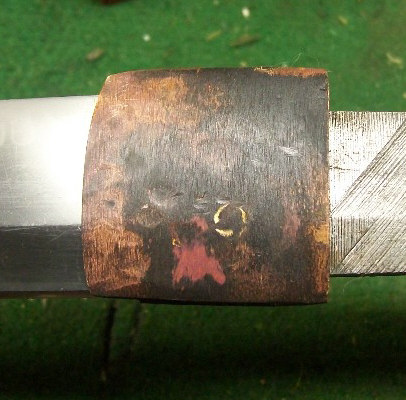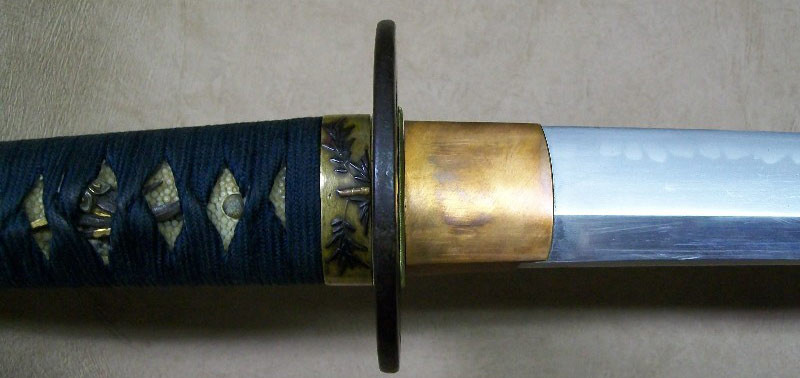- Katana 1€ to 79€
- Katana ONE PIECE
- Katana 80€ to 199€
- Katana 200€ to 599€
- Katana over 600 €
- Katana Custom
- Iaito - 模擬刀
- Wakizashi
- Tanto
- [+] Parts katana
- [+] Katana Accessory
- Engraving katana
- [+] Ninja
- [+] Chinese weapon
- [+] Wooden weapons
- [+] Knife
- [+] Outfits
- [+] House and Objects
- Médiéval Sword
- Military saber
- Home
- Profile
- Services
- Help
- Log in
- **Cart**
- What a difference in a katana and an Iaito
- The different types of steel
- How to choose your katana
- Accessories and maintenance of Iaito and katana
- Little katana dictionary
- What disciplines to practice with a katana or an iaito
- Musashi Miyamoto the greatest samurai Japan has ever known
- The laikidoka sword: the bokken
- Kendo, the legacy of the samurai
- The making of a katana
- The Habaki of the katana
- The Kanjis
- Budo
- The Saya of the katana
- Kyudo
- The Yumi
- The Hamon of the katana
- The Tsuba of the Katana
- How to measure a katana or an iaito
- The Sageo of the katana
- The history of the Japanese sword - 1
- The history of the Japanese sword - 2
- Custom katanas and iaitos
- Chanoyu, the Japanese tea ceremony
- The Iaido
- The boshin war or the last samurai
- The best incense from Japan
- Renovation of Japanese swords
- Ninja
- FAQ
- Terms and conditions
- Site map
- Contact
- Useful links
- Private life
- Clubs & Communities
The Habaki of the katana
Role of habaki

Its role is multiple: the first is to keep the blade of the katana in its sheath giving it a kind of flotation because without HABAKI, the blade would rub along the wood, which could cause scratches.
Its supporting role is due to its particularly tight fit in the scabbard, preventing the katana blade from falling when it is turned over.
These two purely practical advantages hide other equally important ones.
Mechanically, it absorbs shocks due to impacts following blows given but also received; first, it cushions them and restores only a part of them to the hilt, thus making it possible to preserve them.
Its supporting role is due to its particularly tight fit in the scabbard, preventing the katana blade from falling when it is turned over.
These two purely practical advantages hide other equally important ones.
Mechanically, it absorbs shocks due to impacts following blows given but also received; first, it cushions them and restores only a part of them to the hilt, thus making it possible to preserve them.



The habaki can be made in various materials depending on the wishes of the owner of the blade: gold, silver, copper. usually the habaki is made of copper.
The HABAKI therefore takes place on the blade of a katana at a place called HABAKIMOTO. This metal collar is located on the NAKAGO against the MUNEMACHI and HAMACHI notches which precisely mark the border between blade, NAGASA and bristles, NAKAGO. Like all other Japanese saber mounts, the HABAKI can be dismantled manually.
The HABAKI therefore takes place on the blade of a katana at a place called HABAKIMOTO. This metal collar is located on the NAKAGO against the MUNEMACHI and HAMACHI notches which precisely mark the border between blade, NAGASA and bristles, NAKAGO. Like all other Japanese saber mounts, the HABAKI can be dismantled manually.
His origins
How HABAKI was established and developed in JAPAN, we do not know precisely. It seems quite likely that it came from CHINA via KOREA.
Even the oldest Japanese straight swords, dating from the 8th century, bear HABAKIs.
The HABAKI made as a particular metal frame of the saber dates back to the HEIAN era, examples confirming this. The first were in iron, then made from the metal from which the pots were made and finally especially from copper. Today, it is moreover this metal which is the most used.
Indeed, it is a "soft" metal, which can easily come into contact with the steel of the blade without risking causing scratches to the latter.
The decorated and varied HABAKI that we meet nowadays appeared during the MOMOYAMA period.
Those in gold were the specialty of the fiefs enriched by the victorious battles which had enabled them to recover some as booty and to reuse it then on purpose.
However, covering the HABAKI with gold or silver leaves seems to date from the MUROMACHI period during which, covering with metal sheets was fashionable.
Making a hakabi
How HABAKI was established and developed in JAPAN, we do not know precisely. It seems quite likely that it came from CHINA via KOREA.
Even the oldest Japanese straight swords, dating from the 8th century, bear HABAKIs.
The HABAKI made as a particular metal frame of the saber dates back to the HEIAN era, examples confirming this. The first were in iron, then made from the metal from which the pots were made and finally especially from copper. Today, it is moreover this metal which is the most used.
Indeed, it is a "soft" metal, which can easily come into contact with the steel of the blade without risking causing scratches to the latter.
The decorated and varied HABAKI that we meet nowadays appeared during the MOMOYAMA period.
Those in gold were the specialty of the fiefs enriched by the victorious battles which had enabled them to recover some as booty and to reuse it then on purpose.
However, covering the HABAKI with gold or silver leaves seems to date from the MUROMACHI period during which, covering with metal sheets was fashionable.
Making a hakabi


The making of a habaki begins with the folding of a copper plate shaped by hammering around the silk at the level of the Hamachi and the Munemachi. Once the habaki has been shaped around the blade, a small triangular piece (machigane) will be placed inside the habaki on the lower part at the level of the Hamachi (bottom); the two pieces will be welded.
The habaki has absolutely no play but can still be disassembled because of its mounting, for cleaning the blade. Once this operation is completed, the habaki will be repositioned on the tang of the blade, reshaped to perfect its shape; the finish will be ensured with the file while respecting the symmetry of the part, this one must be conical as well on the profiles as at the level of the upper and lower part of the habaki, thus allowing a good maintenance in the saya (sheath ).
The habaki has absolutely no play but can still be disassembled because of its mounting, for cleaning the blade. Once this operation is completed, the habaki will be repositioned on the tang of the blade, reshaped to perfect its shape; the finish will be ensured with the file while respecting the symmetry of the part, this one must be conical as well on the profiles as at the level of the upper and lower part of the habaki, thus allowing a good maintenance in the saya (sheath ).


Sources:
http://nippon_to.monsite-orange.fr
http://www.nipponto-ken.fr
http://nippon_to.monsite-orange.fr
http://www.nipponto-ken.fr
|
No comments
|




